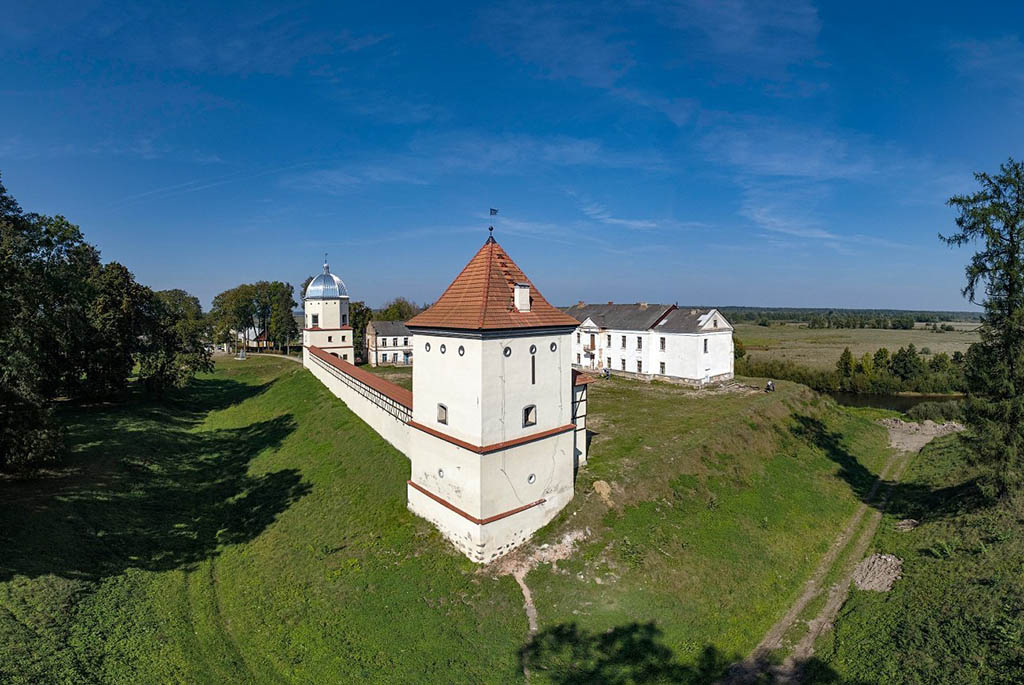The castle's founding date is considered to be 1581, as evidenced by an inscription on a weather vane found during restoration. The structure was built at the request of the influential magnate Jan Kishka, who at the time owned Lyubcha. Originally, the building was wooden, with only the defensive tower at the entrance being made of stone. The fortress was surrounded by moats on three sides, and the waters of the Neman on the fourth. Within the castle walls, there were a brewery, bathhouse, printing house, warehouses, soldiers' barracks, outbuildings, and a chapel – the owner of Lyubcha was a follower of Protestantism.
In the early 17th century, as a result of a marital union, the castle became the property of the Radziwill family. Under the Radziwills, the residence's halls were filled with a collection of books, weapons, and art objects, and it was decided to fortify the castle itself. The structure was surrounded by brick walls a meter thick, and three stone towers were built at the corners.
Despite the fact that the castle was well fortified, in the middle of the 17th century, it could not withstand the onslaught of Zaporozhian Cossacks, and then the Moscow troops, who destroyed and looted the Radziwill estate. The building completely lost its defensive value, and the Radziwills were forced to leave Lyubcha. In subsequent years, the castle belonged to various families who did not maintain order on its territory.
At the end of the 19th century, new owners appeared in Lyubchansky Castle – the noble family of Falz-Fein. The Falz-Feins erected an exquisite palace in the neo-Gothic style and a guest house on the site of the castle, restored the destroyed towers, replacing loopholes with windows, and landscaped the surrounding area – they organized a park, laid out flower beds, and equipped a boat dock.
In this form, the Lyubchansky noble residence existed until the beginning of the 20th century. Two World Wars did not spare Lyubcha. Historical buildings were destroyed, and only two towers survived the combat actions. In the post-war period, a school was built on the remains of the Falz-Fein palace. In the 1960s, a local history museum was opened at the school.
In the early 2000s, a local resident, I. Pechinsky, became interested in preserving the historical site. He organized the charitable foundation "Lyubchansky Castle," thanks to which funds were raised for the partial restoration of the castle complex. To date, two towers and one of the fortress walls have been recreated. How the towers looked inside is not known for certain, so they were restored based on examples of similar structures. The work was carried out by volunteers, university students, researchers, and other interested individuals. The restoration of Lyubchansky Castle continues to this day. The initiators plan to recreate and preserve the architectural monument, and also open a museum exhibition within its walls.
The full completion of restoration work in the castle is still far off, so come to Lyubcha right now. You will see the restored structures of the castle complex, take a stroll along the picturesque shore of the Neman, and, if you wish, you can personally participate in the restoration of Belarus's cultural and historical heritage. There is no railway station in Lyubcha, so you can only get here by car or buses that run from Novogrudok.





